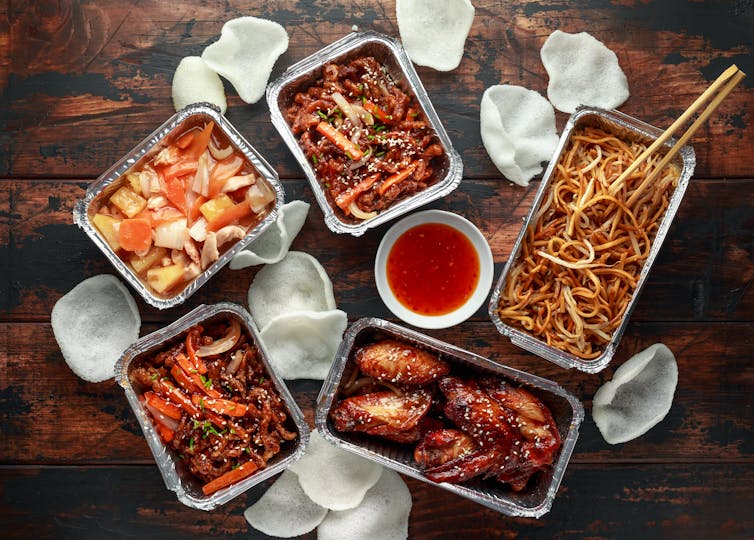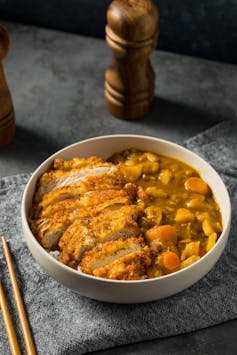“I’ve never been so disgusted in my life.” Such was one Twitter user’s response to a recent video showcasing the spoils of a British Chinese takeaway order. “British Chinese” was trending on social media as American users analysed and criticised the cuisine, apparently bewildered by the “inauthentic” inclusion of chips or thick curry sauce.
British consumers and producers of Chinese food alike proudly showcased their takeaways in retaliation. Posters on either side of the debate sought to deem their version of Chinese food “authentic” or “traditional”, revealing the powerful connotations of these two words and their connection to culinary identity.
There is no hard definition for what makes food authentic or traditional. Instead, food goes through a process of authentication. A dish once considered novel or adaptive can form a strong identity over time, eventually becoming traditional in its own right.
Chinese food is a perfect example of this. It has always been produced in ways that blur both national boundaries and the borders between ethnic cuisines.
The history of Chinese food both in China and across the world serves as a rich record of trade, migration and colonialism. Many citizens of former British colonies such as Malaysia and Hong Kong who migrated to the UK started working in the food sector. From the 1950s onwards, they began renting vacant fish and chip shops in small towns and villages.
In rural areas, these businesses were often one of few takeaway options available. Using the facilities on hand, they added a variety of dishes to their menu to cater to those more used to fish and chips fare.
Roux-like curry sauces were included in Chinese takeaways for many of the same reasons. Indo-Pakistani inspired curries from another colonial migratory flow were the other major source of “non-British” takeaway foods at the time.
Stand-up comedian Pierre Novellie defines British cuisine with one word – “wet”. There’s truth to his observation. It’s amazing how migrants have adapted and shaped the British love of thick sauces and no-fuss takeaways to suit their own businesses.
Chinese takeaways around the world
In Australia, Chinese takeaways date back to the 1850s, when Chinese cookhouses and greengrocers provided for gold miners in remote parts of the country. Today, it’s common for Australians to joke that a town is not a town without a pub and a Chinese takeaway (often being the same establishment).
As Jan O’Connell, author of A Timeline of Australian Food notes, Australian Chinese food reflects a complex history of pro and anti-immigration policies.

A typical British Chinese takeaway order, including chicken chow mein, chilli beef and prawn crackers. DronG/Shutterstock
Cantonese-inspired “sizzling honey prawns” and chunky Australian variations of “Mongolian beef” are considered staples of the modern Aussie diet. Where British Chinese food is brown and gravy laden, Australian varieties favour sweet flavours and bright colours.
Legacies of colonialism have shaped other Asian cuisines too. Japanese dishes that have become popular in the US, UK and Australia – such as ramen noodles and gyoza dumplings – are a product of the movements of people, foodstuffs and ideas across national borders.
In Slurp, a history of ramen, cultural historian Barak Kushner traces how movements between China and Japan shaped the rise of ramen and gyoza.

Katsu curry sauce shares common ancestry with the British Chinese takeaway. Brent Hofacker/Shutterstock
Chinese noodle varieties – often but not always made by migrants in port cities such as Yokohama – popularised the consumption of wheat-based noodles in Japan. The terms “ramen” and “gyoza” sound very much like the Japanese pronunciation of the northern Chinese foods lamian and jiaozi, although Kushner disputes the direct connection between the two terms.
After the second world war, many Japanese soldiers and farmers that had been stationed in occupied China returned home. There, some opened local Chinese restaurants with dishes inspired by their time in China.
British troops stationed in Japan as part of occupation forces in the same postwar period introduced local chefs to curry powder and roux-like sauces. Today’s popular Katsu curry sauce shares common ancestry in many ways with the British Chinese takeaway.
It’s clear from the recent social media trends around British Chinese food that the cuisine holds unique importance in different local identities. Cuisines go through stages of innovation, adaptation and localisation, becoming considered authentic or traditional in the process.
The passionate defence of British Chinese food on TikTok shows how important the humble takeaway is today and the contribution of Chinese migration to British identity.



 Robinhood Expands Sports Event Contracts With Player Performance Wagers
Robinhood Expands Sports Event Contracts With Player Performance Wagers  Asian Fund Managers Turn More Optimistic on Growth but Curb Equity Return Expectations: BofA Survey
Asian Fund Managers Turn More Optimistic on Growth but Curb Equity Return Expectations: BofA Survey  Fed Near Neutral Signals Caution Ahead, Shifting Focus to Fixed Income in 2026
Fed Near Neutral Signals Caution Ahead, Shifting Focus to Fixed Income in 2026 


































